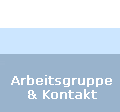|
|
 |
 |
| Process-oriented catchment modeling a the meso-scale |
The
conceptual catchment model TACD (tracer aided catchment
model, distributed) was developed
to carry out process-oriented modeling at meso-scale catchment
(approximately 101-103 km2).
The model was originally developed for the Dreisam catchment
including its different sized sub-basins,
but was applied recently to a range of basins located
in Germany, Austria and the Pacific-Northwest
of the United States. The model is a raster-based modular
modeling system and was applied in
different temporal and spatial resolutions, i.e. using
time steps between 5-min and one months and
grid sizes between 20x20 m2 and 2000x2000 m2. The modeling
results were quite good; in particular
the ability of the model to simulated internal stages
correctly was demonstrated. Successfully was
also the integration of tracer data into the model calibration
and validation, which led to an improved
process basis of the modeling. Dr. Stefan Uhlenbrook was
awarded with the Tison Award, which is
the international prize for young hydrologist (age under
41) from the International Association of
Hydrological Science (IAHS), for a paper about the previous
version of the model TAC.
Key publications:
- Uhlenbrook S., Leibundgut Ch., 2002: Process-oriented
catchment modeling and multiple-response
validation. Hydrological Processes, 16, 423-440.
- Uhlenbrook S., Roser S., Tilch N. 2004: Development
of a distributed, but conceptual catchment
model to represent hydrological processes adequately
a the meso scale. Journal of Hydrology, in press.
|
|
|







